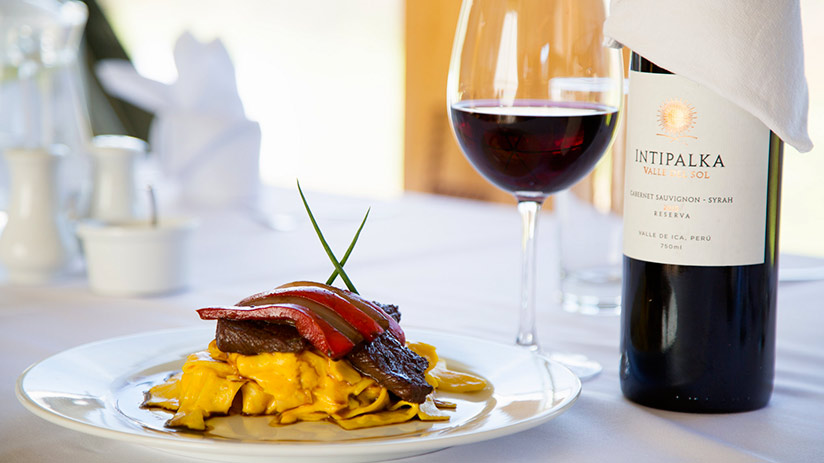It is impossible to deny the incredible attention and popularity that Peruvian cuisine has received in recent years. And this is not surprising, since its gastronomic boom is due in large part to the natural diversity of the country and the diverse cultural heritage that it hosts. But, Which country has the best gastronomy? There is no doubt that Peru has the best gastronomy in South America and is one of the best culinary destinations in the world. Our wonderful country never ceases to surprise different foreign and local palates. And that is why together with the experts from Machu Travel Peru we have thought of an article that summarizes why Peruvian gastronomy is one of the best worldwide. Join us to learn about some of the best qualities of the fantastic Peruvian cuisine.
12 reasons why Peruvian gastronomy is one of the best in the world
- The Peru gastronomy
- The origins
- Cultural contributions
- Geographical diversity
- Health cuisine
- Best worldwide restaurants
- Recognized chefs
- Amazing seafood
- The aji and peppers
- Novo Andean cuisine
- Fantastic drinks and Pisco
- Mistura food fair
The Peru gastronomy
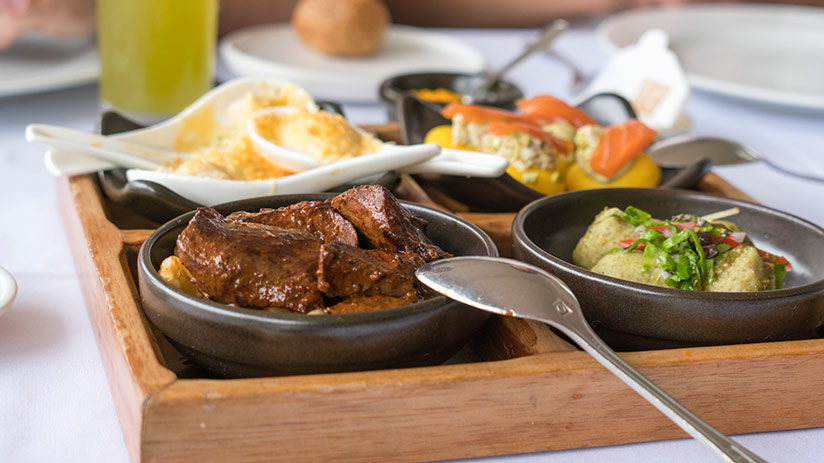
The ancient house of the Inca Empire is a multicultural country that has earned a solid culinary reputation for several years. And thanks to a privileged geographical location between the Amazon, the Andes, and the Coast, which causes an awesome microclimate diversity and amazing ingredients, added to the cultural influence of various ethnic groups that came to the country in past years, such as Japanese, Chinese, Italian, African, you can find a wide variety of tasty dishes that are beginning to conquer the world.
The gastronomic dishes are based on vegetables, fruits, meat, and fish. Although each region of the country has its specialties and contributions, it is in the capital of Lima where all these ingredients and cooking styles mix to enjoy a true mix of flavors and influences. You can also get to know some wonderful internationally recognized restaurants with many franchises around the world and have their headquarters in Lima.
The origins
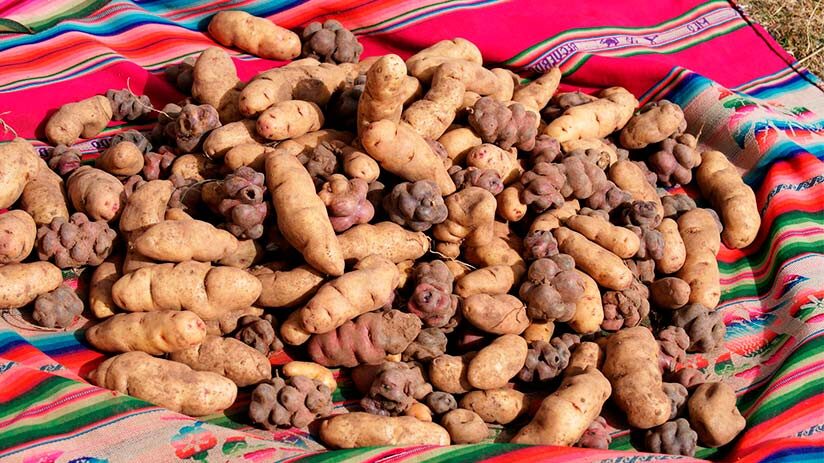
And what is a traditional Peruvian dish? It is a dish whose preparation and consumption were born, grew up, and evolved in the kitchens of Peruvian families for centuries. Usually, these have a humble origin, from the Incas period when some potato types, legumes, and alpaca and cuy meat are consumed. Passing by the colonial time when the subjugated Peruvian waited for the leftover foods of his Spanish patrons to be creative and cook with these remains abundant food for their families up to the current age when this cuisine evolved and adopted foreign ingredients and preparation techniques from various cultures to give origin to the tasty traditional Peruvian dishes.
Cultural contributions
1. The Spanish influence
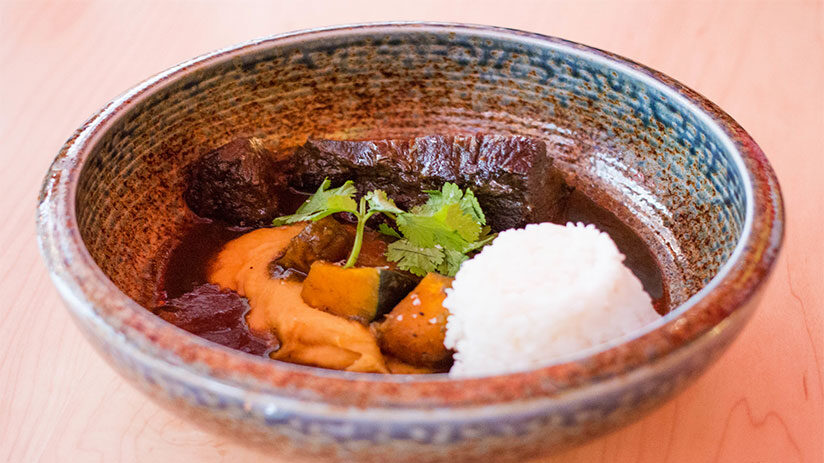
The Inca diet consisted of a variety of potatoes, some legumes, corn, Andean cereals like Quinua and Kiwicha, and a few types of meat, besides some scant vegetables. The Spanish (due to the conquest in 1532) were the firsts to influence the precarious Peruvian cuisine with European ingredients, and animals (like lamb and chicken among others). These ingredients were added to the Andean cuisine, beginning a process of assimilation and evolution.
2. African influence
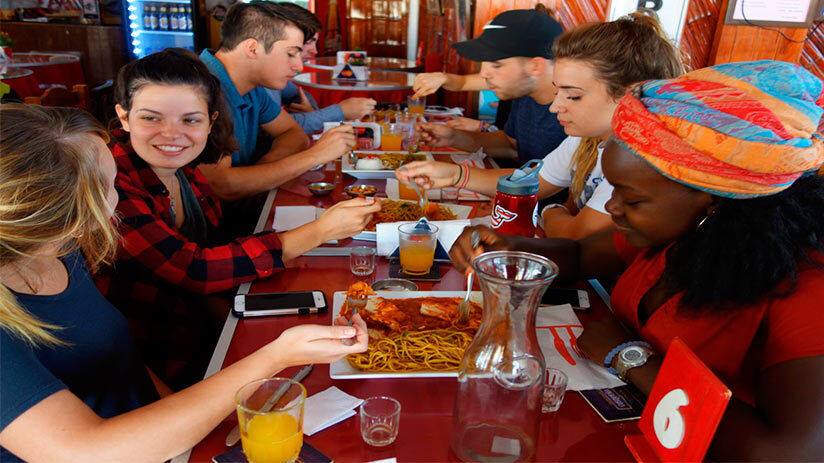
Together with the Spanish, the African slave came to Peru (Between 1524 – 1527) with their costumes and traditions, they were situated in the sugar estates on the Peruvian coast, specifically, south of Lima. They were the persons who, with imagination and inventiveness, created tasty dishes from food leftover by their Spanish patrons, like the Aji de Gallina (Peruvian chicken spicy stew) that was made with shredded leftovers from a boiled chicken. Or the Anticucho (grilled beef heart, cow, or alpaca) parts of animals that were not eaten by the Spanish.
3. The Italian influence
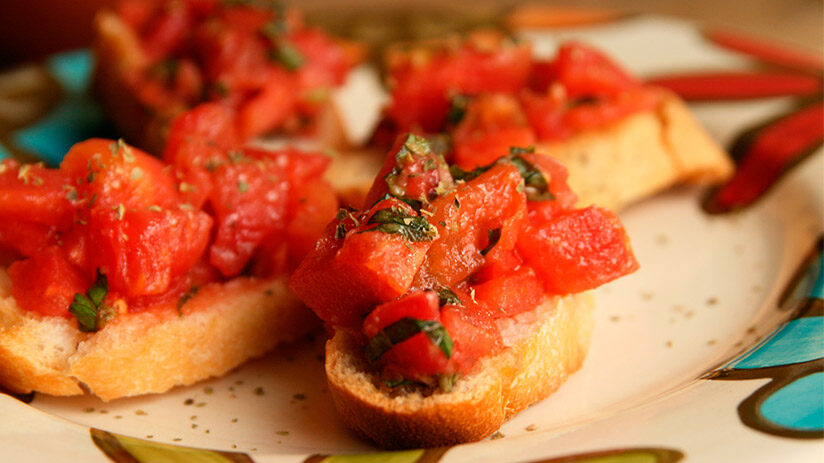
Not far away, the Italians showed up between the 16 and 17 centuries. It is due to political alliances between the Spanish crown and the duchies of Milan, the Kingdom of Naples, and the Republic of Genoa, (Current Northern Italy). They came to work in the recently discovered Guano Islands (at that time, guano was a natural fertilizer in vogue around the world) Besides their workforce, they brought native ingredients of northern Italy and the cook techniques of their cuisine, mixed with the Peruvian, the result could not be better. Green spaghetti with grilled meat, minestrone soup (based on Basil), and red noodles are some examples.
4. The Chinese influence
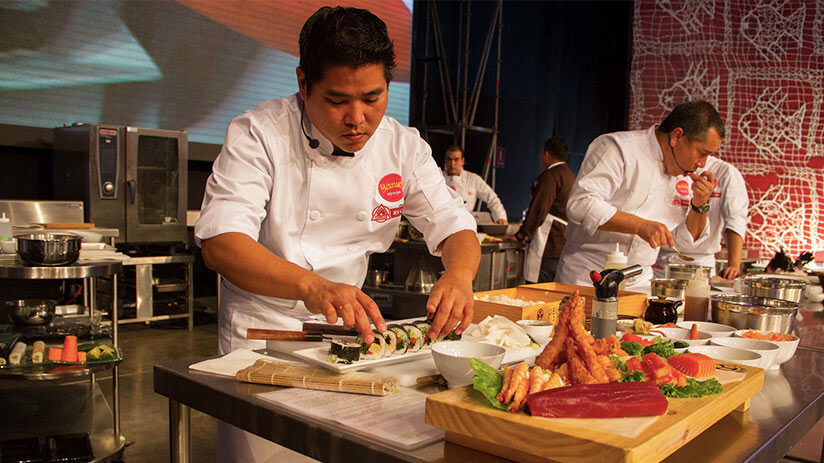
Since 1849 the Chinese culi (denomination for porters and low-skilled workers from China, India, and other Asian countries) came to Peru to replace African slaves in the Peruvian coast sugar states (the great landowners of the time already knew that the president of Peru, Ramón Castilla, would abolish slavery in 5 years). In this sense, a large flow of Chinese began to arrive in Peru, bringing with them some native spices from the Asian country and their own knowledge of their cuisine. Over time and due to numerous Chinese in Peru, special markets were opened that exclusively shipped Chinese ingredients. The fusion food of Peruvian and Chinese cuisine gave as result a new cuisine, the Chifa. Salty flavors and textures, even acid, perfectly combined with sweet and penetrating flavors, the Chaufa rice, and the Kan Lu Wantan (large artisanal cookies dipped in tamarind juice and accompanied by pieces of pork, chicken, and fresh vegetables) are the best examples of this cuisine.
5. The Japanese influence
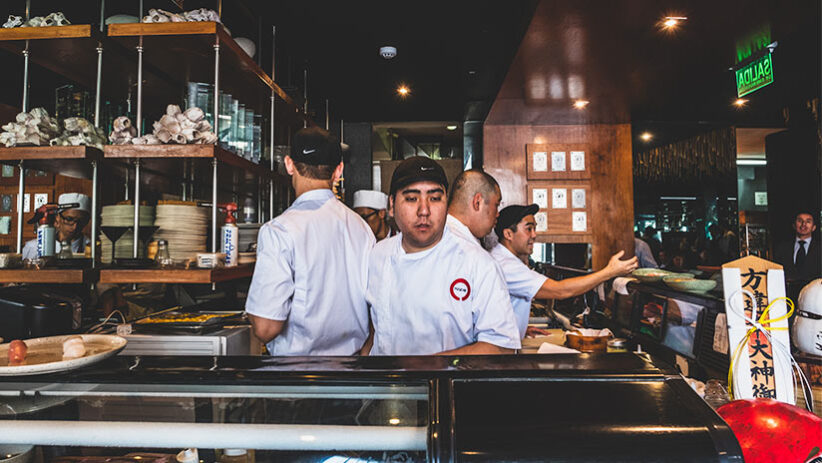
In 1899, thanks to an agreement between the government of Peru and the kingdom of Japan (The first agreement signed between a South American country with the country of the rising sun) thousand of Japanese immigrants arrived in Peru to work, preview contracts (these were better than those signed by the Chinese) for a short period of time in sugar states and the Peruvian south jungle (Madre de Dios province) to extract the rubber. Finishing the contracts, the Japanese people began to work independently, in their own businesses. Makis (White rice rolled over fresh fish), Tiraditos (Fine strips of fish marinated in citrus juice), or Ramen soups are some examples of this cuisine.
Geographical diversity
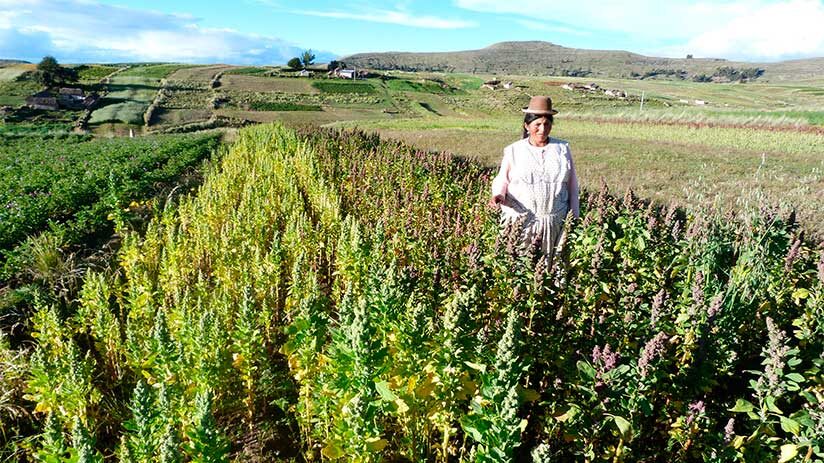
Peru also boasts great geographical diversity, its different landscapes and its appellative of world climate synthesis are proof of this. Therefore, within the Andean country, there are 3 main regions, the Andes, the Amazon, and the Coast. Each of these regions is characterized by offering its own climates, environment, ingredients, and traditional and typical dishes.
In mountain areas, it is very common to find dishes where quinoa and potatoes are the main ingredients, besides fried and dry food. While in the coastal region, the use of shellfish predominates, besides the production of lemons and grapes. Or there is also the case of the Amazon region, where Paiche is consumed, by one of the largest fish in the region.
Therefore, if you travel through Peru, you will be able to experience the great dish diversity of different nature regions. A whole variety at your disposal. And don’t miss the delicious Peruvian street food, where you can get to know the local tastes and flavors.
1. Coast gastronomy
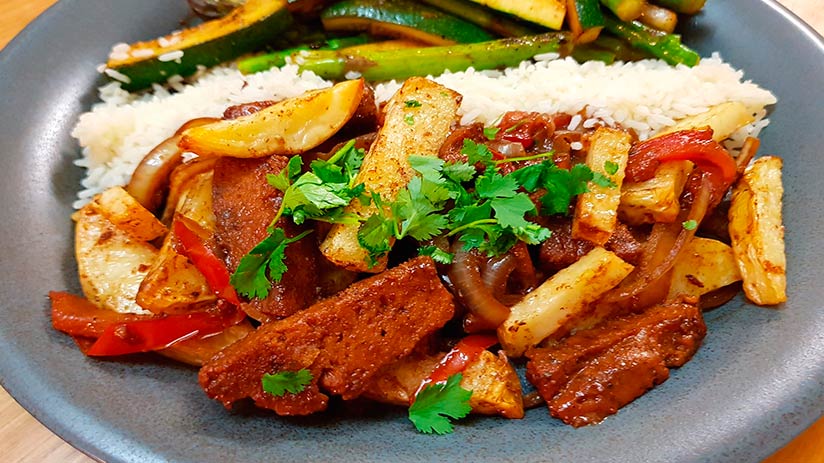
The Peruvian coast has the advantage of meeting the Pacific Ocean, an inexhaustible source of delicious seafood and fish. We cannot forget that the cuisine of this area was the one that obtained the greatest influence from the migratory currents (since most of these settled on the Peruvian coast). And it is thanks to this abundance that Peru stands out for its Ceviche. This wonderful national dish consists of raw fish marinated with lemon juice, chili, and onion among other ingredients. The coast of Peru is characterized by offering wonderful seafood delicacies, so you will find a great variety of dishes. Peruvian gastronomy is distinguished by being much more delicious than Ceviche. You will find something for everyone’s taste.
It is advisable to try the delicacies of the coast before noon. Since the ceviche is best enjoyed in the morning. Or you can also choose to discover the everyday food of the coast and visit a small family restaurant. Where you can enjoy a “menu” at a fairly affordable price. In Lima, you have to make sure to try the “Lomo Saltado”, a classic dish among the locals.
2. Gastronomy of the Andes
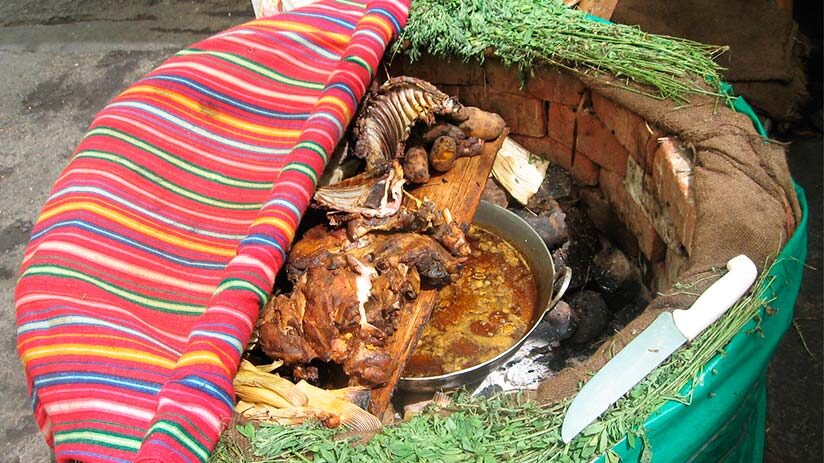
In the Andes region, potatoes become the protagonists of a great series of dishes. And with more than 5,000 varieties, you will find potatoes for all tastes. Today, some of these varieties are in danger of disappearing. Due to international preference for certain varieties and global warming, some varieties are in danger of being lost. Despite this, many producers are looking for ways to perpetuate these forms of tradition and culture.
Another of the forts of the Andean region is the Cuy. It is a highly traditional dish and a classic for the locals. The Cuy is a fairly tasty guinea pig with a flavor similar to that of chicken. If you are in Arequipa, the delights of Rocoto Relleno, Ice Cream Cheese, and Chupe de Camarones will leave you speechless.
Also, Andean cereals like the Quinua and Kiwicha are highly consumed by the Andean population of Peru. Even, these Andean foods were recognized by NASA (the United States National Aeronautics and Space Administration) as superfoods consumed by its astronauts in space (Kiwicha has been shown to be grown in the most hostile environments in space)
3. Amazon gastronomy
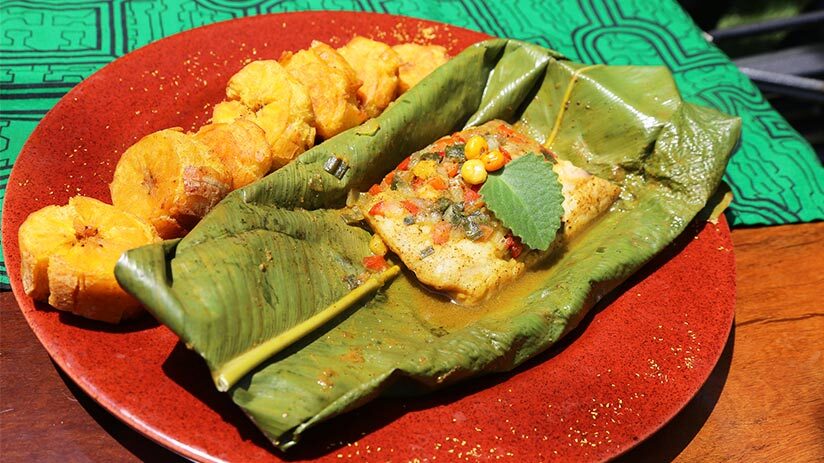
If you travel to the Amazon in Peru, you will also find a distinctive cooking style. In our point of view, it is where Peruvian gastronomy takes its most exotic side. Just by visiting the markets in the area, you can start to notice the differences. The great abundance of exotic and unknown fruits will make the markets quite a sight to behold. Fruits such as Ungurahui, Aguaje, and Wasai (also known as Acai Berry) are some of the most popular examples in the area. The entire Amazon basin is full of superfoods. Some of these fruits have wonderful health properties.
But fruit is not the only thing you will find in the Amazon. You can also enjoy a wide variety of fish, such as Paiche. Among the most popular dishes, we find the Juane, a kind of Amazonian Tamale that is accompanied by Yuca. And if you are an adventurer by nature, you cannot stop trying Suri. A large palm worm that is highly valued by locals.
Health cuisine
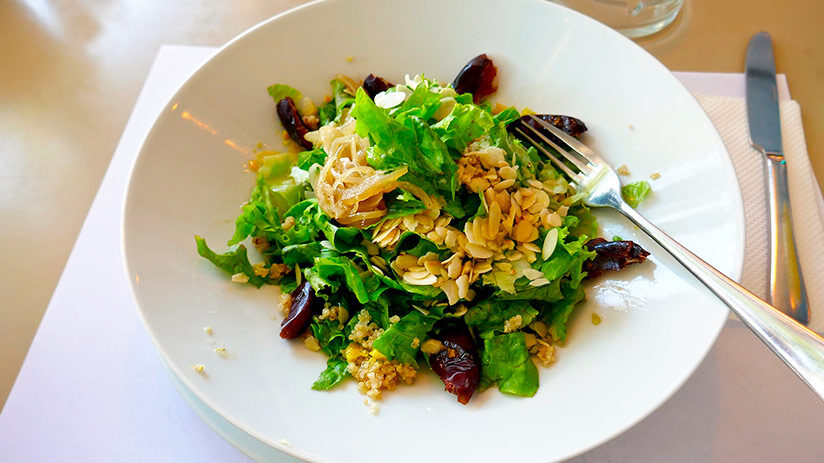
The heritage of the ancient inhabitants of Peru not only resides in its wonderful buildings and ruins but can also be seen in their diet. The Incas and other pre-Hispanic cultures knew how to eat very healthily before the arrival of the conquerors. They didn’t abuse many fats and sugar.
The reason may be that the ancient Peruvian settlers knew the benefits and advantages of eating potatoes, quinoa, corn, and other Peruvian superfoods. We believe that had it not been for their excellent nutrition and food intake, they would not have been able to expand to territories like Colombia, Argentina, or Chile, and would not have had enough energy to build the wonders we appreciate today.
And Peruvian gastronomy has a strong base in the great Inca diet, which later assumed other cultural aspects and influences. Therefore, during your next vacation, you can’t miss out on the incredible variety of fruits and vegetables that you can enjoy in Peru. In this diverse country, you can enjoy a wide variety of highly healthy ingredients and eat without guilt.
Best worldwide restaurants
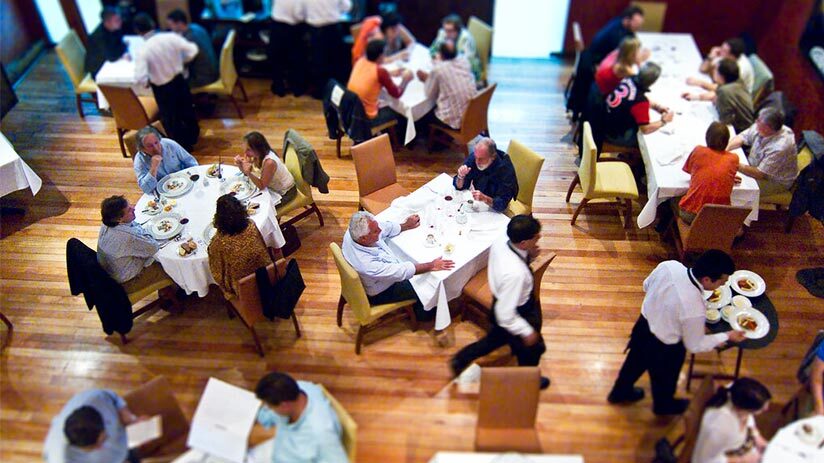
But the great food has to be served in awesome culinary establishments and Lima, the Peruvian capital, has the best restaurants in the country and the world, many of them with franchises in the world capitals like Tokyo, New York, London, Madrid, and Qatar, among others. Places like Central, Maido, Astrid & Gastón will give your palate a lot to talk about. These restaurants complete the 9 Peruvians located at the top of the best in all of South America, and 3 of them (Central, Astrid & Gaston, and Maido) always are in the top ten of the list of the best restaurants in the world elaborated every year by the prestigious “The 50 best”, (The culinary Oscars)
These renowned restaurants have years of quality service and a long history in the gastronomic world. Of course, food is not the only incredible thing to try, the Peruvian wine will also be to your liking, besides the experience offered in each restaurant, like the waitress’s explanation about the history of the dish, the ingredients used, or the meaning of this one in the Andean country. And, if you were wondering, what are the popular Peruvian dishes served in these restaurants? Peru has a large menu of dishes that are considered popular. The Ceviche (fresh pieces of fish marinated in lemon juice with chopped hot pepper), the Lomo Saltado (beef stir-fry with rice), the Causa Rellena (chicken purée in mayonnaise wrapped in potato dough), and the Ají de Gallina (Peruvian chicken spicy stew) are just a few small examples of popular dishes. But the truth is that depending on the region you are in, some dishes may be more popular than others.
Recognized chefs
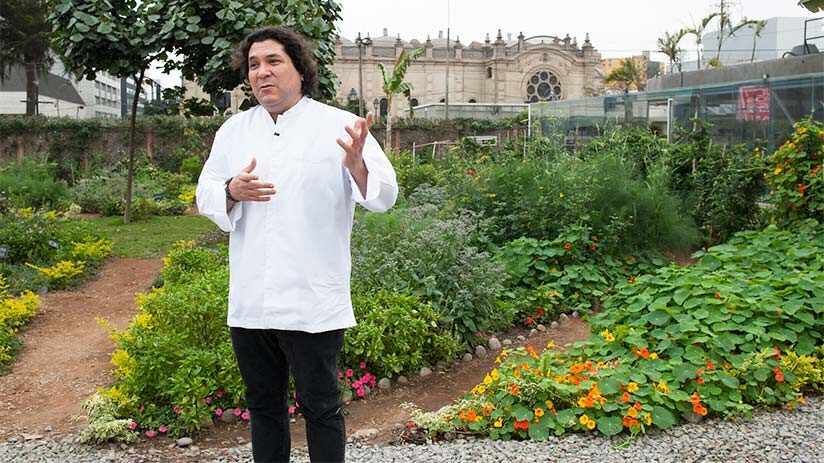
For Peruvian cuisine to occupy privileged positions worldwide and be on par with Italian, French, Japanese, or Chinese cuisine, Peruvian chefs had to do a great job for a long time. And all began in the first decade of the 2000s when a TV cooking show, starring a Peruvian chef called Gaston Acurio, showed not only the ingredients and preparation of the most recognized Peruvian dishes but also the biodiversity of Peru, its history, and people behind each tasty Peruvian dish (producers, fishermen, ranchers, peasants among others). Until that moment, no Peruvian knew that this chef had a successful restaurant chain (called Astrid & Gaston) in Lima with franchises in New York, London, Madrid, and Paris among others. In this form, the diffusion of the wonderful Peruvian cuisine was not only within Peru but in the world capitals where its restaurants operated.
Nowadays, the new blood of Peruvian chefs take over from Gaston Acurio and created new restaurants with franchises in more destinations. But not only that, but some of them received the title of “Best Chef of the world” at the World’s 50 Best Restaurant’s Chef’s Choice Award in consecutive years, like the case of Virgilio Martinez, or his wife Pia Leon, or the Japanese-Peruvian Chef Mitsuharu “Micha” Tsumura. Who, with these achievements, manage to position Peruvian cuisine on the podium of the best cuisines worldwide.
Amazing seafood
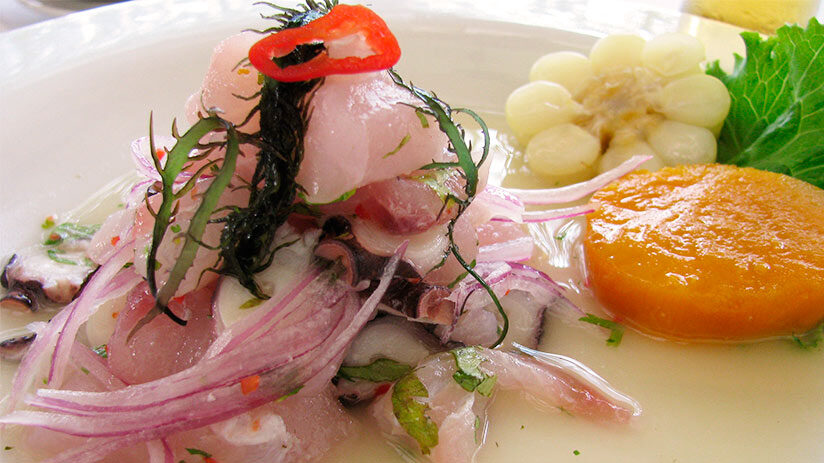
Seafood was always another important part of the diet of Peru. Even Peruvians have a strong fishing tradition and culture dating back more than five thousand years old. Of course, Japanese cuisine contributed a little with new forms to cook fish in the last years. Therefore, if you plan to travel to Peru, you can’t miss out on trying the Peruvian ceviche, considered the most delicious around the world.
Within the Peruvian coast is where seafood is most relevant. For this reason, Peruvian gastronomy includes a wide variety of seafood, of which shrimp and crab. Moreover, horse mackerel, Paiche, trout, and much more stand out. Precisely, the trout are very enjoyed in some regions of the Andes (where the sea does not reach), while the Paiche is the king in some Amazon regions. In conclusion, fish are the basis of many typical dishes in the surrounding Peruvian cities. Therefore, it is said that fish, and its consumption, are not exclusive to the Peruvian coast.
The aji and peppers
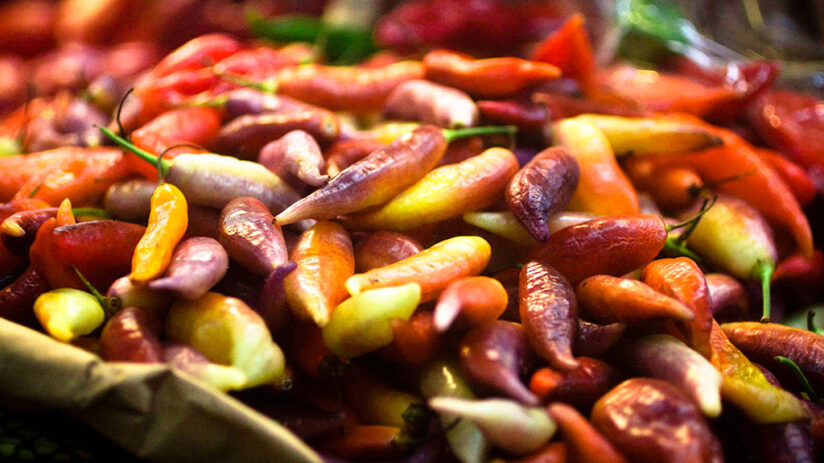
Before the arrival of the Spanish, the Inca country was already distinguished by its crops of Ají. Even the Inca Garcilaso de la Vega, has denoted within his “Royal Commentaries of the Incas” (1609), how the inhabitants of the Peruvian region had a great tradition of putting “Uchu” on almost everything they ate. By “Uchu” it can be understood as a hot sauce. From this source, it is known that the diet of Peruvians already included to a large extent the Yellow Chili and the Rocoto Pepper. Currently, there are five types of chili peppers that are grown in Peru, these are known as Pepper de Rocoto, Ají Amarillo, Ají Panca, and Pipi de Mono among others. And today, a large part of Peruvian Gastronomy is linked to its Ají preparations. Whether their dishes are prepared with chili pepper or accompanied by chili sauce. Chili sauce preparations can vary and differ greatly depending on the different tourist sites in Peru. Besides they can be made with varied ingredients that can change depending on the region.
Novo Andean cuisine
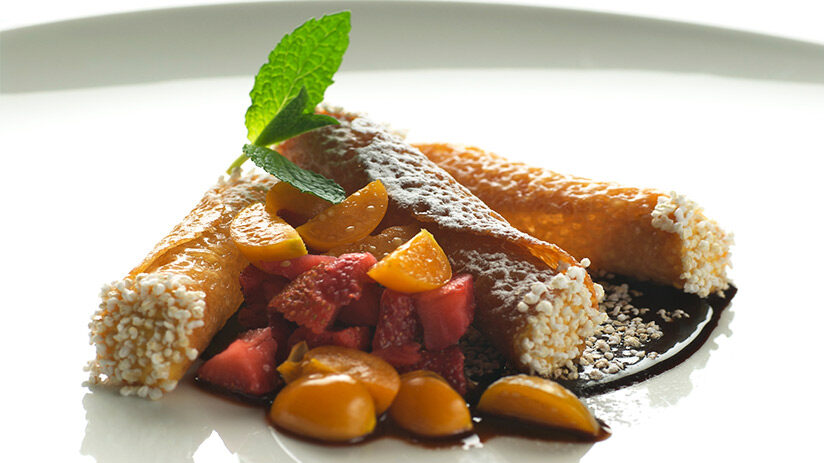
Although Peruvian gastronomy could be considered the product of a fusion of cultures, the continuous advance, and current progress is largely due to the reinvention that suffered in the last years. The gastronomic sector is an area in constant evolution, and with the high tourist frequency in Peru, many chefs are forced to reinvent themselves in numerous ways. That is why creativity does not end when it comes to Peruvian gastronomy. Peruvian chefs continue in their eagerness to combine different influences, trying to bring some street or traditional dishes to another type of public. Even Peruvian desserts have seen part of this art of reinvention.
In this sense, the great adaptation of Peruvian traditional dishes towards contemporary approaches and the continuous effort to incorporate new ingredients (Many of them coming from the Andes, a place ignored for a long time by the traditional Peru cuisine) gave, as a result, a new cuisine, the Novo Andean cuisine. Alpaca meat bathed in oyster and tamarind sauce, or Cuy (guinea pig) served with Italian risotto are some examples of this fantastic cuisine.
Fantastic drinks and Pisco
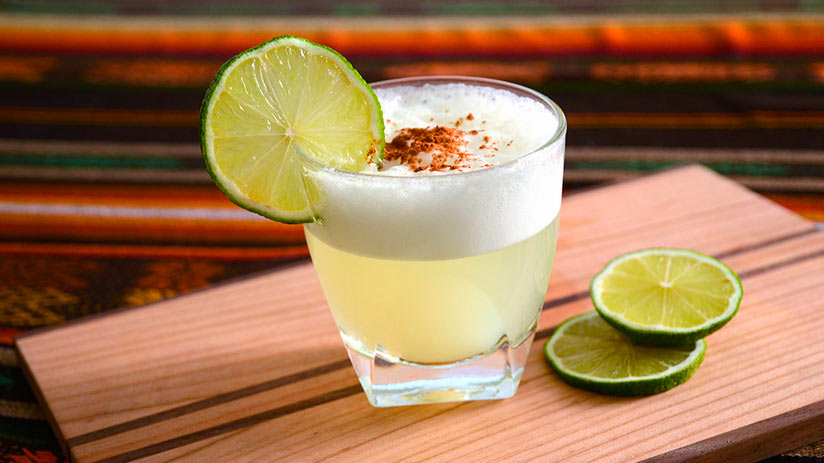
With such a variety of fruits coming from its high Andean valleys and its Amazon area, it would not be unusual to see incredible juices and other alcoholic drinks in Peruvian hotels, restaurants, discos, and even airports. Also, you can enjoy an extensive menu of traditional non-alcoholic drinks as well as other delicious cocktails. Besides, you can choose to try the wonderful Chicha Morada, as well as the Chicha de Jora and the Frutillada, beverages made from fermented corn.
You will even find soft drinks of national origin, such as the Inka Kola. (When Coca Cola entered the Peruvian market in 1937, it could not displace Inka Kola from the first place in the preference of Peruvians, being forced to buy it in 1999) This yellow soda has a characteristic flavor for Peruvians (A banana with mint), while for foreigners it can resemble a chewing gum flavor.
Also, among Peru’s main liquors, we can find Pisco, its national point of pride. It is a liquor very similar to Brandy, a grape distilled and produced in regions such as Ica, Arequipa, and Tacna. Also, it is an incredible appetizer to enjoy before dinner or lunch. There are many varieties differPeru’sin tastes and aromas, but the Peruvian version is, undoubtedly, the best.
Mistura food fair
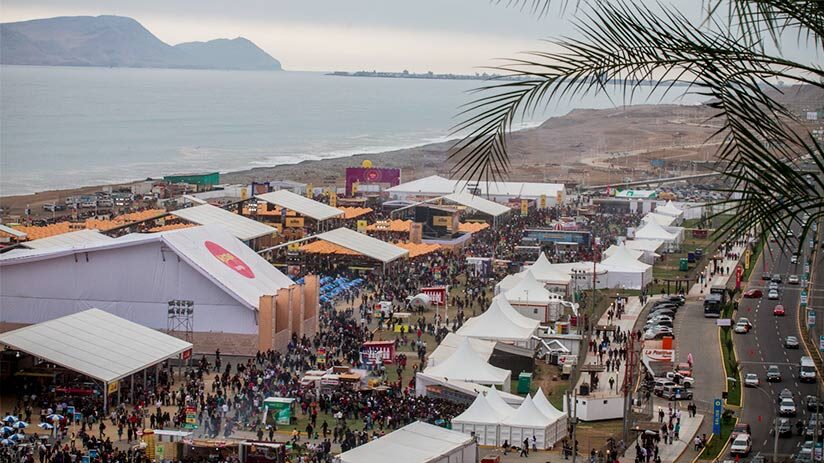
One of the best gastronomies in the world deserves its own food fair where it shows the most popular Peru dishes and restaurants. Similar to recognized food fairs around the world like Madrid Fusion (Spain), Fiera Internazionale del Tartufo Bianco d’Alba (Italy), or the Taste of Chicago (United States), Mistura is the fair food per excellent in South America. Again, Gaston Acurio and other personalities of Peruvian gastronomy were responsible for carrying this project forward.
Since 2008, the fair of food is held in the month of September, in the city of Lima, showing the best representatives of the restaurant sector in Peru, with tasty dishes within reach of all pockets! Even, in the last few years, Mistura (corsage of various flowers, which in the time of the viceroyalty, the Peruvian ladies distributed to those attending an event) generated its own tourist fluent. If you want to visit Peru in September, this fair of food should not be missing from your list of places to visit in Lima.
“THE GENTLE ART OF GASTRONOMY IS A FRIENDLY ONE. IT HURDLES THE LANGUAGE BARRIER, MAKES FRIENDS AMONG CIVILIZED PEOPLE, AND WARMS THE HEART”
So, Is Peruvian food the best in the world? We firmly believe that it is. With so many recognitions worldwide, we cannot deny that it is one of the strongest gastronomies in Latin America. We hope together with the experts of Machu Travel Peru to have satisfied your curiosity. We try to summarize the main reasons why Peruvian gastronomy is unmatched. And their continuous inventiveness makes them one of the best places to enjoy the wonderful gastronomic culture. Keep in mind that our experts know how to organize a good trip. If you want to know about our gastronomic tours, do not hesitate to consult with our qualified travel advisors. Our team will be happy to help you fulfill everything you need to know to enjoy our culinary art.
Peru has so much to offer, it can be hard to know where to start. With many years of experience in the tourism sector, Machu Travel Peru is happy to help with anything regarding your trip to Machu Picchu and any tours around it. Make your Machu Picchu experience an unforgettable one!
